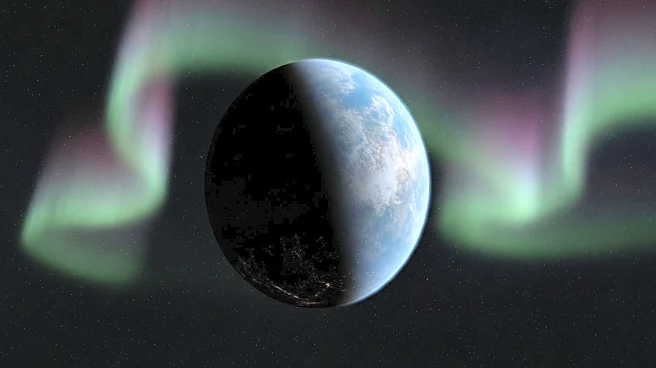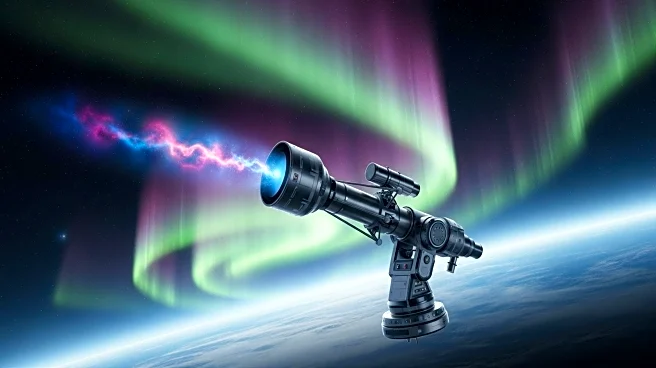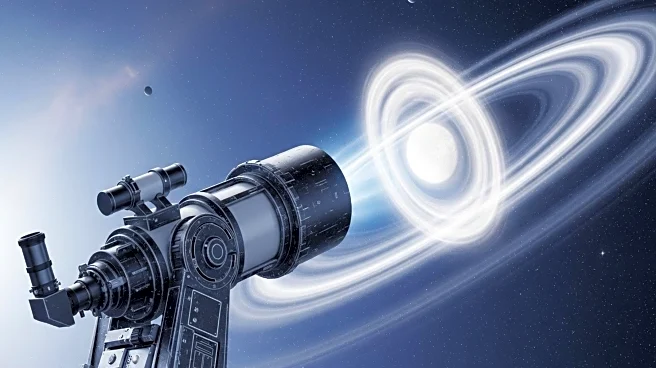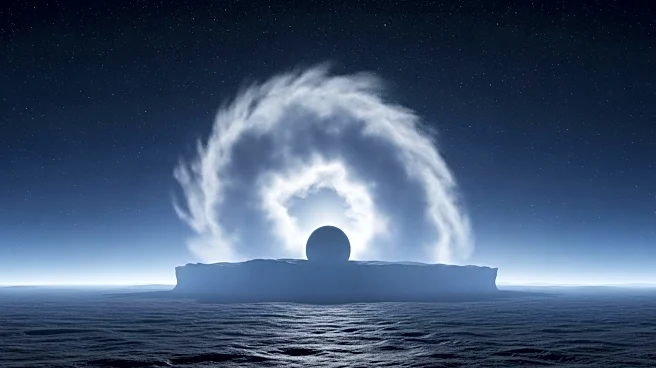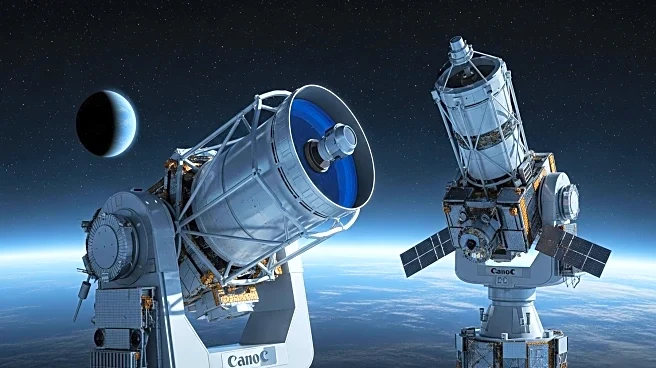What's Happening?
The James Webb Space Telescope (JWST) has provided a detailed weather report for SIMP-0136, a brown dwarf located about 20 light-years away in the constellation Pisces. This celestial body, often referred to as a 'failed star,' does not orbit a sun and is characterized by auroras that heat its upper atmosphere. The JWST's observations have allowed astronomers to track changes in the atmosphere of SIMP-0136 over a full rotation, revealing shifts in temperature, chemistry, and cloud formations. The study, published in the journal Astronomy & Astrophysics, marks the first time atmospheric changes have been directly measured on a brown dwarf, offering insights into the weather processes of exoplanets.
Why It's Important?
The findings from the JWST are significant as they open new avenues for understanding the atmospheric dynamics of celestial bodies beyond our solar system. By studying brown dwarfs like SIMP-0136, which are not influenced by the glare of a parent star, astronomers can gain insights into the weather patterns of giant exoplanets orbiting distant stars. This research is crucial for future explorations and characterizations of exoplanets, potentially aiding in the discovery of habitable worlds. The ability to map atmospheric layers and detect temperature swings provides a foundation for predicting weather shifts on other planets, which could have implications for understanding planetary climates and potential habitability.
What's Next?
Astronomers plan to use the techniques developed through the JWST observations on other distant worlds, with future observatories like the Extremely Large Telescope and NASA's planned Habitable Worlds Observatory. These efforts aim to uncover how weather shifts and evolves over time on planets orbiting distant stars. Continued research in this area could lead to breakthroughs in identifying planets with stable climates that might support life. The study of brown dwarfs will remain a focal point for astronomers seeking to understand the complexities of exoplanetary atmospheres.
Beyond the Headlines
The study of SIMP-0136 highlights the importance of advanced telescopic technology in expanding our understanding of the universe. The ability to measure atmospheric changes on celestial bodies that do not orbit a sun challenges traditional notions of planetary systems and opens up possibilities for discovering new types of planets. This research also underscores the potential for auroras to influence atmospheric conditions, a phenomenon that could be common on other exoplanets with strong magnetic fields.

